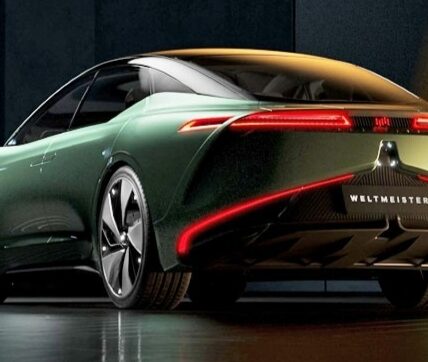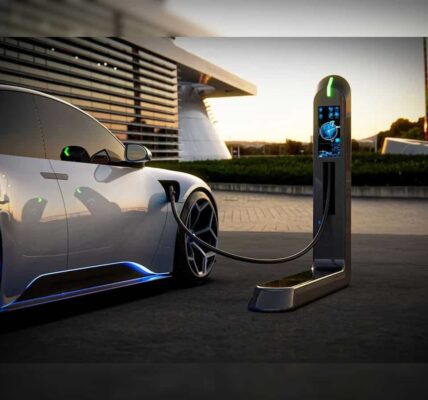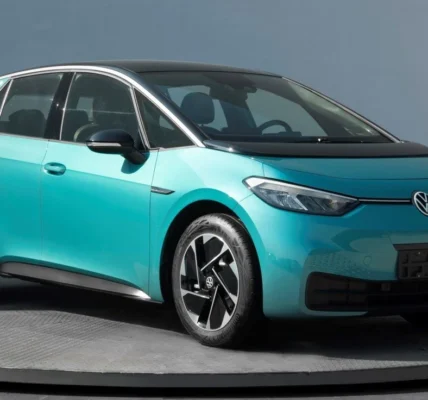Chinese carmakers produced 2.39 million units in November, down by 8.2% from October, while sales fell by 7.1% month on month to 2.33 million units. Production and sales both dropped by 7.9% year on year, according to the China Association of Automobile Manufacturers(CAAM) data published in its monthly report on Friday December 9.
The increasing downward pressure on the economy and the lasting impact of Covid-19 on the automobile consumer market has constrained demand for cars, in turn destabilizing the domestic automobile market, it said.
CAAM also updated its forecasts for total sales in China’s automobile market – it now sees this figure at 26.8 million units in 2022 and 27.6 million units in 2023, equating to year-on-year growth of 2% and 3% respectively.
CCAM had predicted at the start of 2022 that total sales this year would be 27.5 million units, up by 5% year on year, but in July had lowered this forecast to 3%. Its decision to cut it a second time highlights the pressure on the domestic market.
The electric vehicle (EV) sector, meanwhile, maintained solid growth, with sales and output hitting new record highs in November.
Chinese output of EVs increased by 0.78% month on month and 65.6% year on year to 768,000 units in November, while sales were up by 10.08% month on month and 72.3% year on year at 786,000 units, CAAM data shows.
Fastmarkets’ weekly price assessment for steel cold-rolled coil domestic, ex-whs Eastern China was 4,450-4,490 yuan ($640-645) per tonne on December 9, its highest in five months.
The latest assessment was up by 130-150 yuan from 4,300-4,360 yuan per tonne a month earlier after the further loosening of China’s Covid controls brightened the market outlook and boosted market sentiment.
In the spot market, demand for flat steel including CRC – a major component in auto manufacturing – is less affected by a seasonal slowdown than construction steel. Traders described demand for CRC as “stable.”
CRC inventories held by traders in 21 major Chinese cities totaled 1.18 million tonnes at the end of November, the lowest in ten months. Stocks are down by 50,000 tonnes (or 4.1%) from the end of October but 60,000 tonnes (or 5.4%) higher than a year earlier, data from the China Iron & Steel Association showed.
The price rally in the futures and spot markets also encouraged leading Chinese steelmaker Baoshan Iron & Steel to raise its domestic prices for January bookings. The company is increasing its CRC base price by 150 yuan per tonne month on month for January’s domestic bookings, it said on Monday, having kept its prices unchanged for three months in a row.
Anshan Iron & Steel and Benxi Iron & Steel, major steelmakers in northeastern China, said on the same day they are raising their CRC prices by 200 yuan per tonne for January-February bookings compared with December.
The price for aluminium ingot alloy ADC12, an alloy used in car wheels, rose in November after local producers raised their prices to reflect tight scrap supply.
Fastmarkets’ price assessment for aluminium alloy ADC12, exw dp China rose to 19,000-19,300 ($2,714-2,757) yuan per tonne on December 7, higher from 18,800-19,100 yuan per tonne a week earlier. The price was at 18,700-19,000 yuan per tonne at the end of October.
Inventory levels at local producers are relatively low because most have cut production in the second half of this year due to limited availability of aluminium scrap. As well, declines in the ADC12 price from March to July squeezed their margins
Market fundamentals favoured sellers during November despite very thin liquidity in the spot market.
“Output and stocks at most producers are low and we’re not ramping up in the near term because of tightness of scrap,” an east China-based supplier said. “So the price is unlikely to decrease given limited availability.”
“There is no momentum for any [price] increase,” a south China-based producer said. “Demand in many sectors remains very slow, including home appliances, tools etc. And we don’t expect automotive demand to be stronger in the near future.”
Higher aluminium prices on the Shanghai Futures Exchange (SHFE) also underpinned sentiment in the ADC12 market.
The front-month aluminium contract on the SHFE averaged 18,738 yuan per tonne in November, up from an average of 18,476 yuan per tonne in October.
Chinese lithium prices continued to rise over most of November but started to decline from the end of the month, reflecting growing buyer resistance to higher prices.
Fastmarkets’ weekly assessment of lithium carbonate, 99.5% Li2CO3 min, battery grade, spot price range, exw domestic China was 560,000-575,000 yuan per tonne on December 8, down by 10,000 yuan per tonne from 570,000-585,000 yuan per tonne on a week earlier. The price stood at 580,000-600,000 on November 3.
Market participants reported tight lithium supply throughout most of November, which powered that month’s uptrend while also turning lithium consumers more cautious; that caution intensified toward the end of the month, with market participants noting a slowdown in demand from the downstream battery sector.
China’s EV subsidy will end this month, which market observers argue will constrain lithium demand, putting domestic prices under further downward pressure.
Nickel sulfate prices climbed in early November but have reversed lower so far in December, pressured by production cuts among battery makers ahead of the cancellation of the subsidy.
“EVs built after November 15 are scheduled for sale next year… which largely explains the lackluster demand and declining prices [for nickel sulfate] now,” a producer sources said.
Prices for cobalt sulfate, another key battery raw material, have fallen further in November and December, pressured by ample supply and soft downstream buying.
“We have basically no deals concluded for cobalt sulfate since early November because most downstream buyers are focusing on destocking and are only interested in extremely cheap material,” a cobalt sulfate producer said.
“Current market sentiment for the batteries and EVs is bearish, and I doubt whether the market will have any recovery in the first quarter next year so I am not in a hurry to buy more cobalt sulfate,” a cobalt sulfate consumer source said.
Fastmarkets’ price assessment for cobalt sulfate 20.5% Co basis, exw China was 51,000-53,000 yuan per tonne on December 9, fell by 1,000 yuan per tonne from 52,000-54,000 yuan per tonne on December 7. The price was down by 9,000-10,000 yuan per tonne from 61,000-62,000 yuan per tonne on November 2.
The flake fines market, used in natural anode production, was steady last month because of a stalemate between sellers and buyers, sources said.
Fastmarkets’ assessment for graphite flake 94% C, -100 mesh (-194), fob China was $830 per tonne on December 8, stable since the end of October.
While flake graphite prices should have risen in winter given that downstream buyers typically stockpile prior to the seasonal halt, “while sellers tend to raise their offer prices for new enquiries, buyers are bidding lower despite concerns about supply… against a backdrop of slow demand in refractories and pressure on uncoated spherical graphite producers,” a flake graphite trader said.
Fastmarkets’ assessment for graphite spherical 99.95% C, 15 microns, fob China was $2,800-3,000 per tonne on December 8, down by 6.45% from $3,000-$3,200 per tonne in mid-November.
The fall mainly reflects oversupply of uncoated spherical graphite in the past month and lukewarm demand from the anode sector in the past month, according to sources.
The spot price of battery-grade manganese sulfate remained flat in a slow market.
Fastmarkets’ price assessment for manganese sulfate 32% Mn min, battery grade, exw mainland China was 6,200-6,500 yuan per tonne on December 8, unchanged since Fastmarkets launched the price assessment on September 1.
Although producers tried to raise their offer prices after receiving inquiries, customers declined them because they “refuse to pay higher prices given ample supply of this material in the market,” a downstream producer source said.
Because cathode precursor producers source most of their raw materials on long-term contracts, spot demand is limited, sources said.







